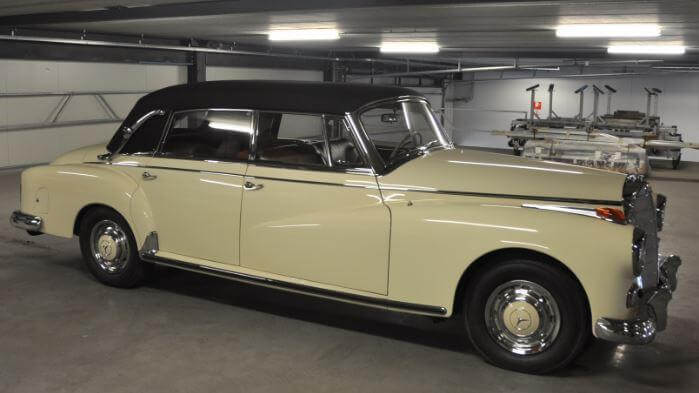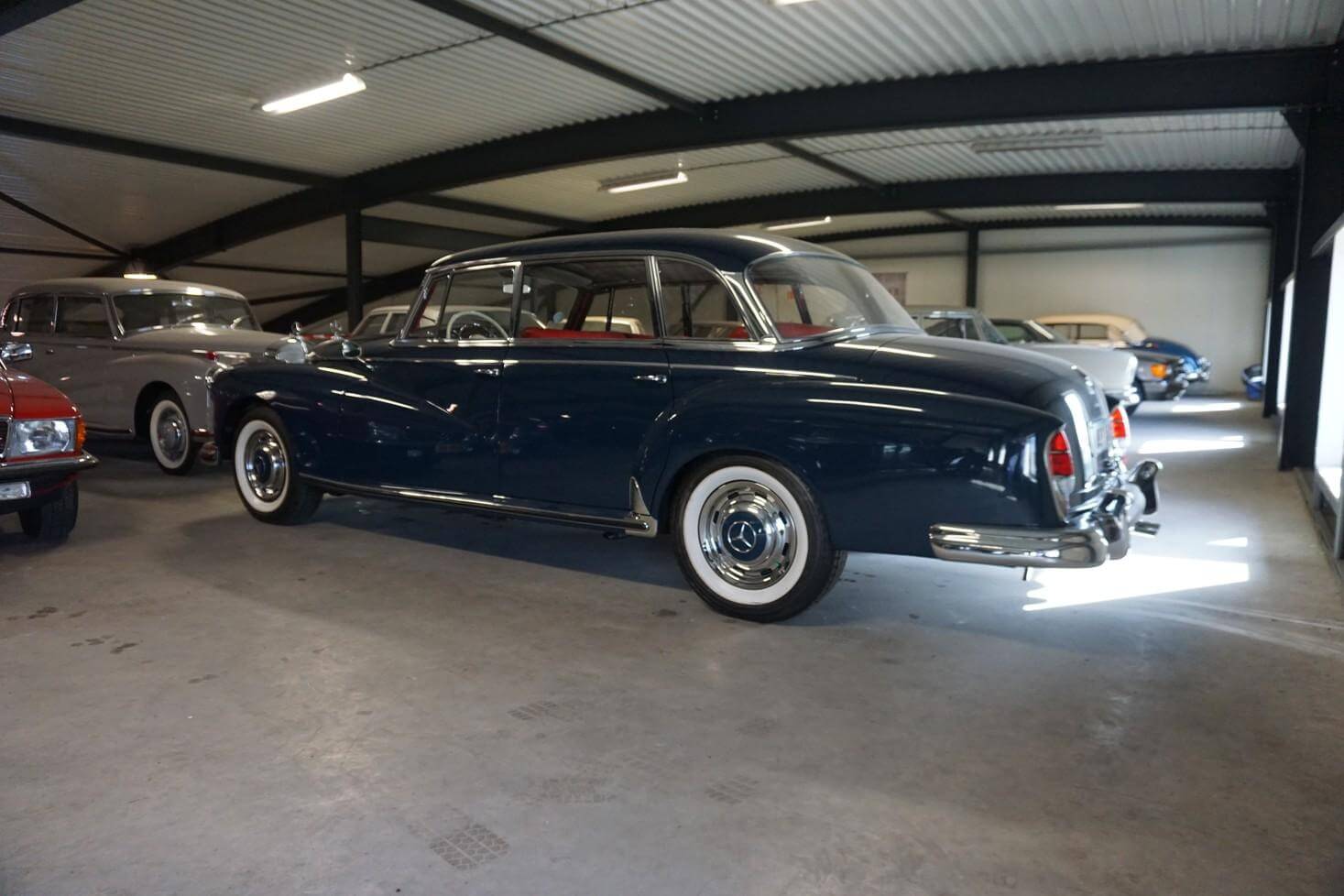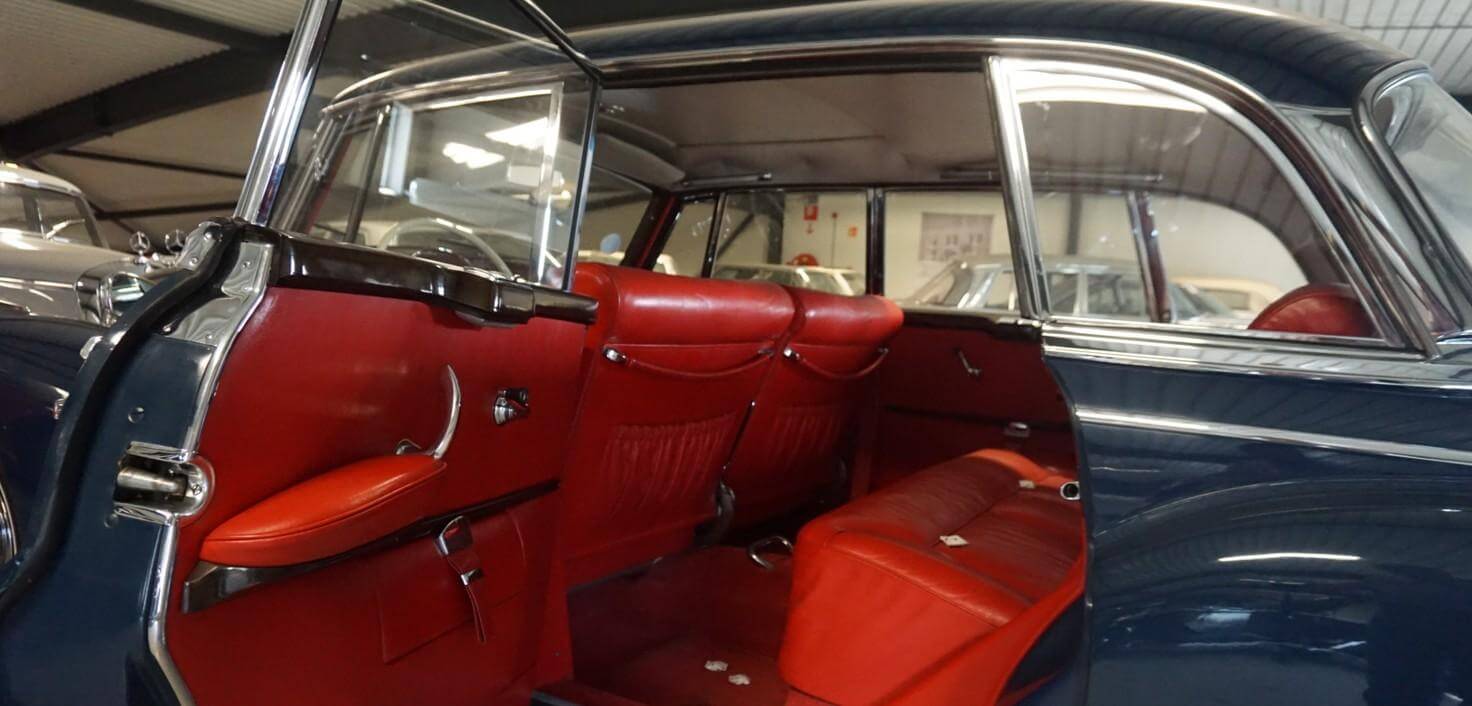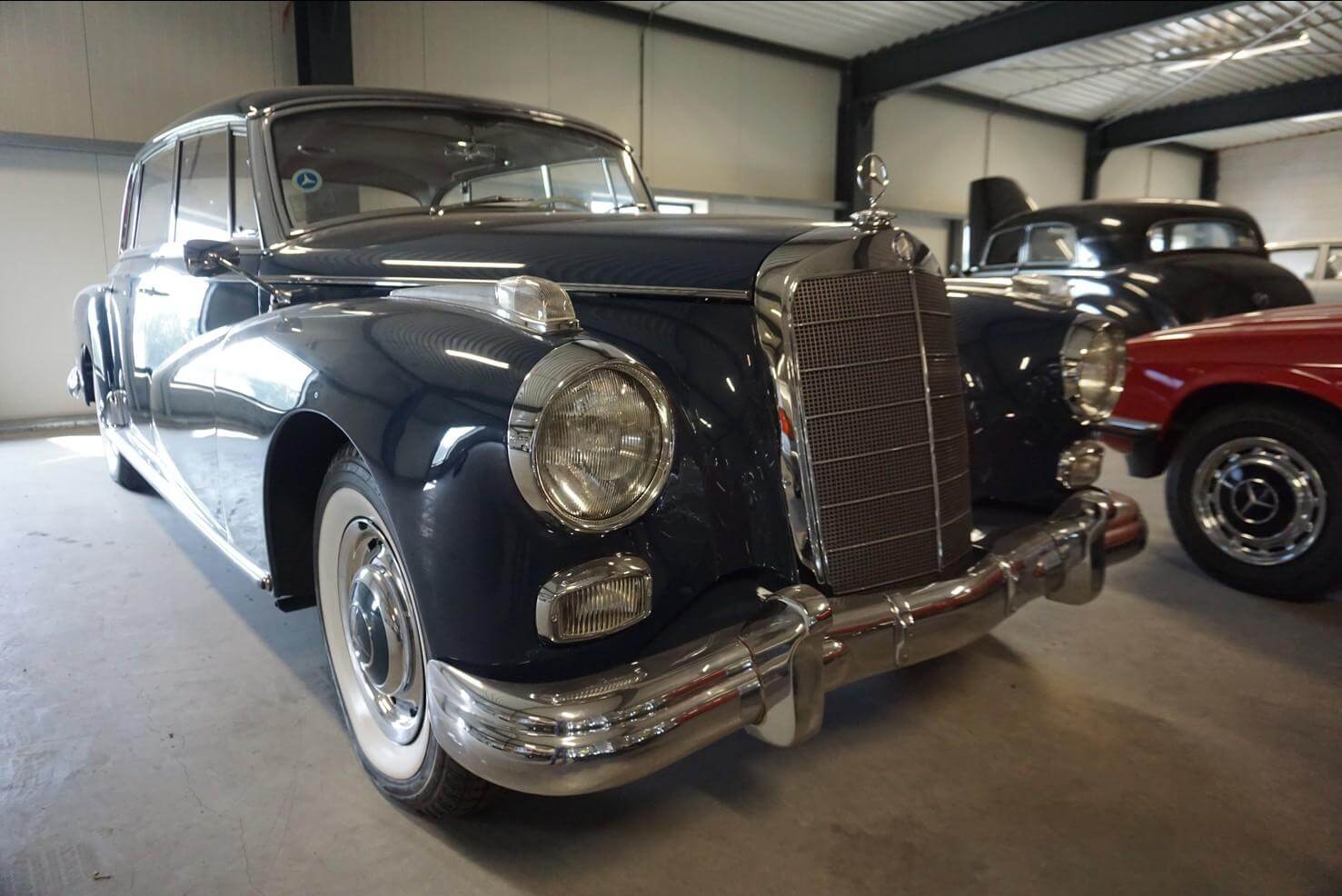Introductie en historie Mercedes-Benz W186 – 189

Introduction and History of the Mercedes-Benz W186 & W189 Series (300 “Adenauer”)
The Mercedes-Benz 300, internally designated as W186 and later W189, was the first true postwar flagship of the Mercedes-Benz brand. Produced between 1951 and 1962, these imposing limousines were built to reestablish Mercedes-Benz as a global leader in prestige, engineering, and craftsmanship.
Known as the “Adenauer Mercedes” after West Germany’s first chancellor, Konrad Adenauer, who used several examples as official state cars, the 300 series became a rolling symbol of diplomatic dignity and national pride.
Historical Context
In the aftermath of World War II, Daimler-Benz faced the immense task of rebuilding its reputation and production capability. By the early 1950s, the company was ready to resume its position as a builder of top-tier luxury vehicles.
The result was the W186 300, launched in 1951, positioned as a direct rival to Rolls-Royce and Cadillac. It was Mercedes-Benz’s most expensive and technologically advanced passenger car of the time and became the preferred choice for statesmen, royalty, and dignitaries around the world.

W186 Series (1951–1957)
➊ Mercedes-Benz 300 (W186 I) — 1951–1954
Debuted at the 1951 Frankfurt International Motor Show
Featured a 3.0L M186 inline-6 engine with 115 hp
Body styles included standard and long-wheelbase limousines
Advanced for its time with independent suspension and hydraulic brakes
Production: approx. 6,214 units
➋ Mercedes-Benz 300b (W186 II) — 1954–1955
Power increased to 125 hp via twin carburetors and higher compression
Introduced power-assisted brakes
Slight exterior refinements (e.g., more chrome trim)
Production: approx. 1,432 units
➌ Mercedes-Benz 300c (W186 III) — 1955–1957
Introduced a larger rear window and optional automatic transmission
Available as a “Lang” (long-wheelbase) version
Marked the final evolution of the W186 platform
Production: approx. 1,432 units

W189 Series – Mercedes-Benz 300d (1957–1962)
The W189 300d replaced the W186 series in 1957 and featured more modern styling, enhanced equipment, and advanced technology.
Key Features:
Bosch mechanical fuel injection — boosting output to 160 hp
Longer wheelbase and pillarless rear design (with fully retractable windows)
4-speed automatic transmission became standard in later years
Offered in saloon and landaulet versions — the latter favored for state occasions
Production: approx. 3,077 units

The “Adenauer” Legacy
Chancellor Konrad Adenauer used six specially configured 300s during his tenure from 1949 to 1963, including both W186 and W189 variants. These cars were often fitted with:
Writing desks
Division glass
Flag holders
Sunroofs or landaulet rear sections
Because of this association, the entire model range became popularly known as the “Adenauer Mercedes.”
Prestige and Clientele
The 300 series was not only used by government officials. Buyers included:
European royalty (e.g., the King of Sweden)
Heads of state (e.g., Haile Selassie, Shah of Iran)
Celebrities (e.g., Gary Cooper, Clark Gable)
Diplomats and captains of industry
It was also used ceremonially and diplomatically, placing it in the same prestige class as the Rolls-Royce Silver Cloud.


Technical Highlights
| Feature | W186 / W189 Series |
|---|---|
| Engine | 3.0L inline-6 (M186 / M189) |
| Power Output | 115 hp → 160 hp (injected) |
| Suspension | Independent front, swing axle rear |
| Transmission | 4-speed manual or automatic |
| Brakes | Hydraulic drums (early) → power brakes |
| Fuel System | Twin carbs → mechanical injection |
| Notable Options | Partition glass, sunroof, landaulet |
Total Production Overview
| Model | Years | Units Built |
|---|---|---|
| 300 (W186 I) | 1951–1954 | 6,214 |
| 300b (W186 II) | 1954–1955 | 1,432 |
| 300c (W186 III) | 1955–1957 | 1,432 |
| 300d (W189) | 1957–1962 | 3,077 |
| Total | ~12,155 |


Legacy
The 300 “Adenauer” established Mercedes-Benz as a postwar luxury leader
Served as the precursor to the later 600 (W100) and S-Class limousines
Remains a highly respected and collectible classic, prized for its craftsmanship and dignified presence
Today, well-maintained examples are often seen at concours events and classic rallies, representing a golden era of Mercedes-Benz craftsmanship and political symbolism.
Summary
The Mercedes-Benz W186 and W189 series (300 Adenauer) were more than just luxury cars — they were ambassadors of postwar German excellence, combining elegant styling, advanced engineering, and a powerful presence. As the preferred vehicle for heads of state and elite clients, these models laid the foundation for the luxury sedan tradition that continues with the modern S-Class.